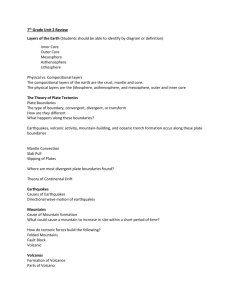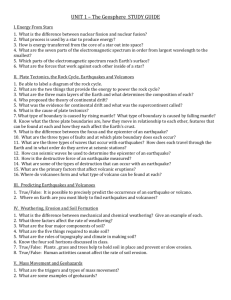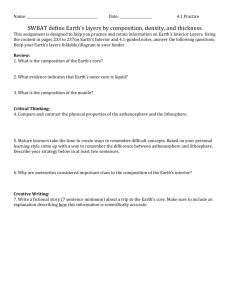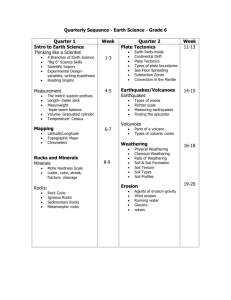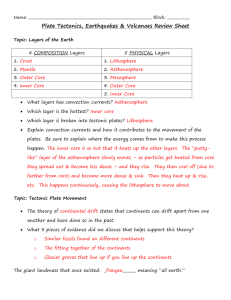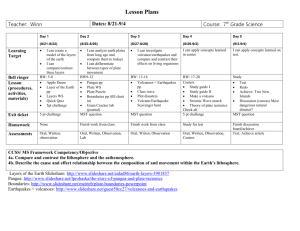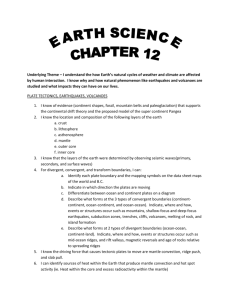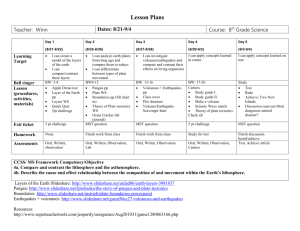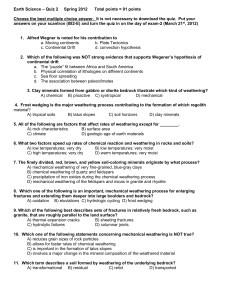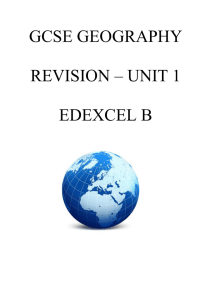3 rd Quarter 6th Grade Science Essentials
advertisement
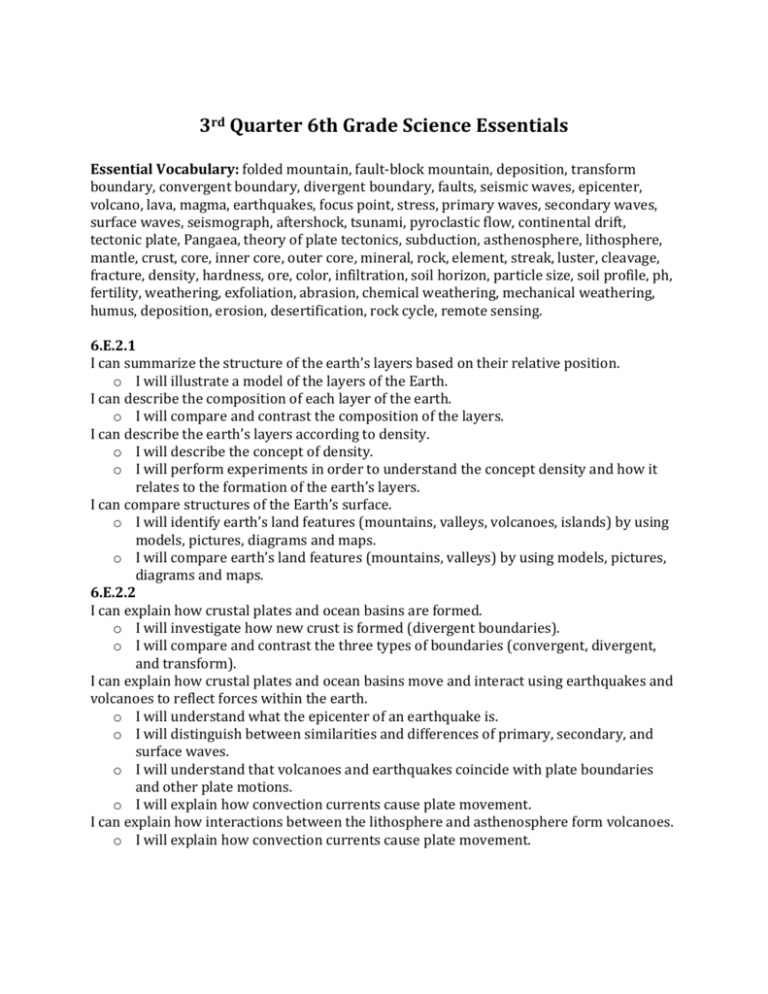
3rd Quarter 6th Grade Science Essentials Essential Vocabulary: folded mountain, fault-block mountain, deposition, transform boundary, convergent boundary, divergent boundary, faults, seismic waves, epicenter, volcano, lava, magma, earthquakes, focus point, stress, primary waves, secondary waves, surface waves, seismograph, aftershock, tsunami, pyroclastic flow, continental drift, tectonic plate, Pangaea, theory of plate tectonics, subduction, asthenosphere, lithosphere, mantle, crust, core, inner core, outer core, mineral, rock, element, streak, luster, cleavage, fracture, density, hardness, ore, color, infiltration, soil horizon, particle size, soil profile, ph, fertility, weathering, exfoliation, abrasion, chemical weathering, mechanical weathering, humus, deposition, erosion, desertification, rock cycle, remote sensing. 6.E.2.1 I can summarize the structure of the earth’s layers based on their relative position. o I will illustrate a model of the layers of the Earth. I can describe the composition of each layer of the earth. o I will compare and contrast the composition of the layers. I can describe the earth’s layers according to density. o I will describe the concept of density. o I will perform experiments in order to understand the concept density and how it relates to the formation of the earth’s layers. I can compare structures of the Earth’s surface. o I will identify earth’s land features (mountains, valleys, volcanoes, islands) by using models, pictures, diagrams and maps. o I will compare earth’s land features (mountains, valleys) by using models, pictures, diagrams and maps. 6.E.2.2 I can explain how crustal plates and ocean basins are formed. o I will investigate how new crust is formed (divergent boundaries). o I will compare and contrast the three types of boundaries (convergent, divergent, and transform). I can explain how crustal plates and ocean basins move and interact using earthquakes and volcanoes to reflect forces within the earth. o I will understand what the epicenter of an earthquake is. o I will distinguish between similarities and differences of primary, secondary, and surface waves. o I will understand that volcanoes and earthquakes coincide with plate boundaries and other plate motions. o I will explain how convection currents cause plate movement. I can explain how interactions between the lithosphere and asthenosphere form volcanoes. o I will explain how convection currents cause plate movement. 6.E.2.3 I can explain how the formation of soil is related to the parent rock type and the environment in which it develops. o I will examine soil properties. o I will evaluate water flow through different types of soil. o I will identify how we use rocks and minerals. o I will explain how rocks move through the rock cycle 6.E.2.4 I can conclude that the good health of humans requires monitoring the lithosphere (stewardship). o I will determine how humans affect the Earth positively and negatively. o I will use remote sensing to better understand human impact on the earth. I can conclude that the good health of humans requires maintaining soil quality (stewardship). o I will explain why soil is a necessary resource. o I will explain how sustainable vegetative cover, crop rotation, and conservation plowing will affect the Earth’s pedosphere.
